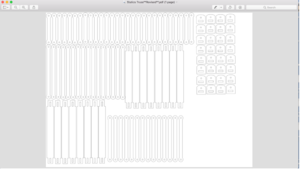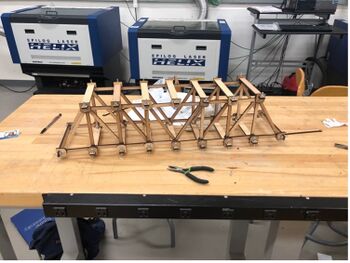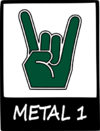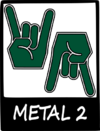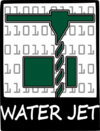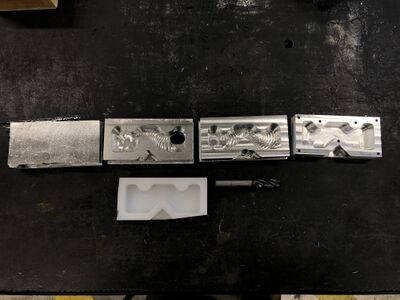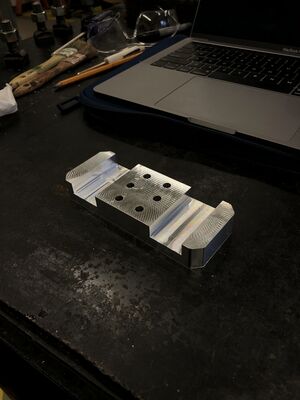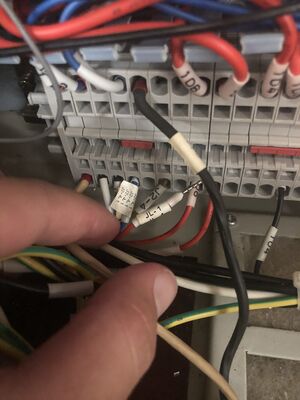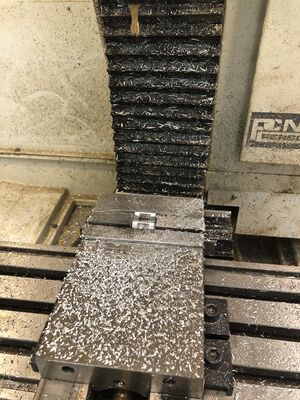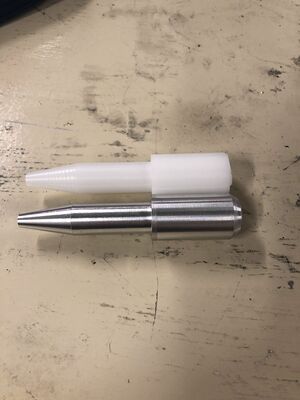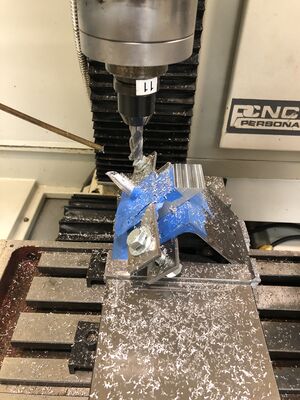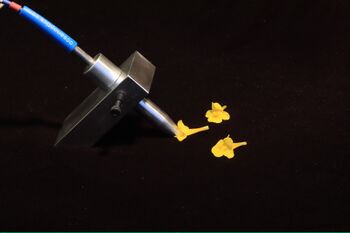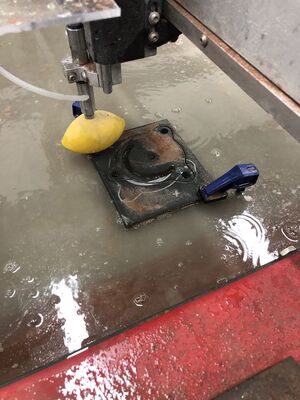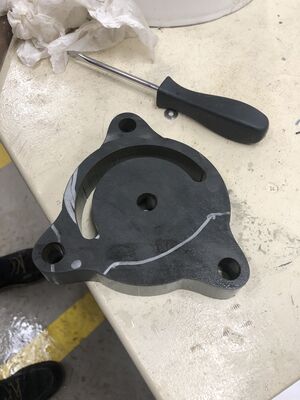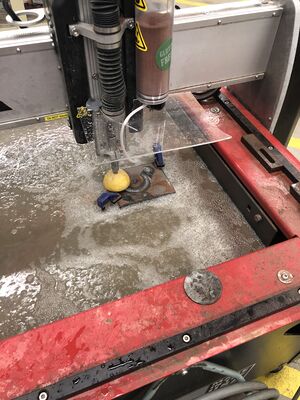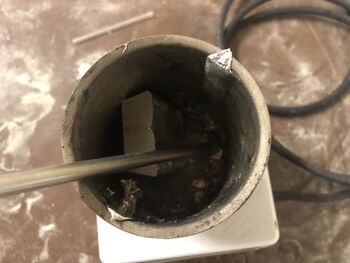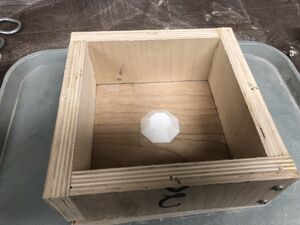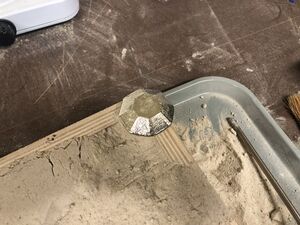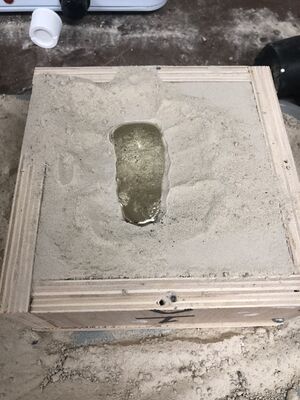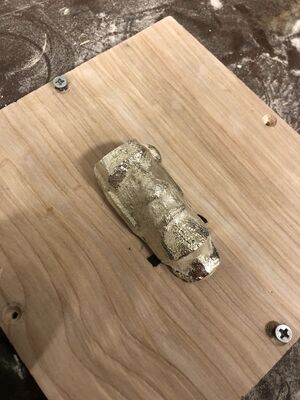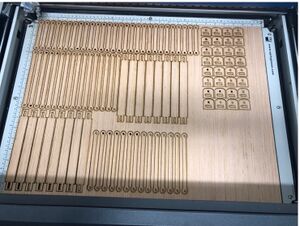Asher Burkin: Difference between revisions
| Line 46: | Line 46: | ||
I have been working on creating some of the Titans of CNC pieces to develop a deep understanding of CAM. Milling has a steep learning curve. I started with watching videos on how to use CAM. I then just started to mill. I found that when I actually started milling I was learning a lot more than just going over and over my CAM and set up. To actually see the tool path cutting in real time, I was able to get a deeper understanding of how everything worked. As my hours on Tulane's CNC Mill added up, I learned that understanding how your machine works, and the limits that you can go has been an essential thing in becoming a better machinist. On this machine, I know what feeds and speeds work best for the different tools, the optimal depths of cuts, adaptive clearing methods for pockets and contours, and most importantly, how hard I can push the machine to get the best results out of it. | I have been working on creating some of the Titans of CNC pieces to develop a deep understanding of CAM. Milling has a steep learning curve. I started with watching videos on how to use CAM. I then just started to mill. I found that when I actually started milling I was learning a lot more than just going over and over my CAM and set up. To actually see the tool path cutting in real time, I was able to get a deeper understanding of how everything worked. As my hours on Tulane's CNC Mill added up, I learned that understanding how your machine works, and the limits that you can go has been an essential thing in becoming a better machinist. On this machine, I know what feeds and speeds work best for the different tools, the optimal depths of cuts, adaptive clearing methods for pockets and contours, and most importantly, how hard I can push the machine to get the best results out of it. | ||
[[File:Titan 1 over time.jpg|400px|]] | [[File:Titan 1 over time.jpg|400px|]] | ||
Revision as of 02:35, 6 January 2022
MakerSpace Fabrication Technician
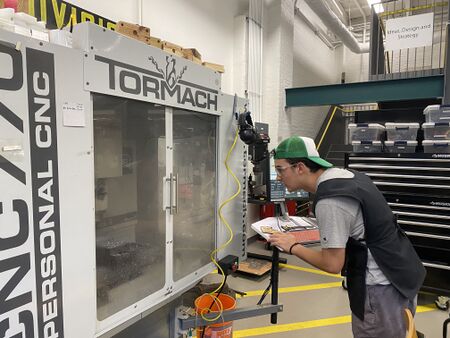
Email: aburkin@tulane.edu
Major: Engineering Physics
Certificate: Mechanical Engineering
LinkedIn: in/asherburkin
Profile
Maker Skills
- Machines - CNC Mill, CNC LatheOMAX Water Jet, 3D Printing (Extrusion/SLA), Laser Cutter (Vector/Raster)
- 3D Design - Solidworks, AutoDesk Fusion 360, AutoDesk MeshMixer
- Finite Element Analysis - AutoDesk Fusion 360
- Graphics - Inkscape
- Programming - Computer Aided Design (CAD), Computer Aided Manufacturing (CAM), MATLAB, Intelli-MAX LAYOUT, Intelli-MAX MAKE, Cura
Projects
CNC Mill
I have been working on creating some of the Titans of CNC pieces to develop a deep understanding of CAM. Milling has a steep learning curve. I started with watching videos on how to use CAM. I then just started to mill. I found that when I actually started milling I was learning a lot more than just going over and over my CAM and set up. To actually see the tool path cutting in real time, I was able to get a deeper understanding of how everything worked. As my hours on Tulane's CNC Mill added up, I learned that understanding how your machine works, and the limits that you can go has been an essential thing in becoming a better machinist. On this machine, I know what feeds and speeds work best for the different tools, the optimal depths of cuts, adaptive clearing methods for pockets and contours, and most importantly, how hard I can push the machine to get the best results out of it.
These are the final versions of the first and second piece I milled from the Titans of CNC course.
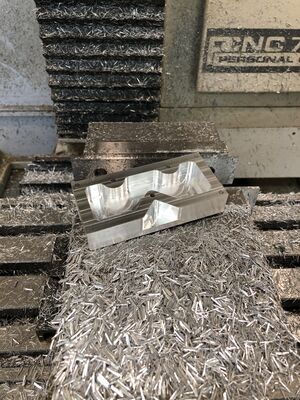
CNC MILL Repair
I identified, rewired and fixed Tulane Makerspaces' CNC Mill.
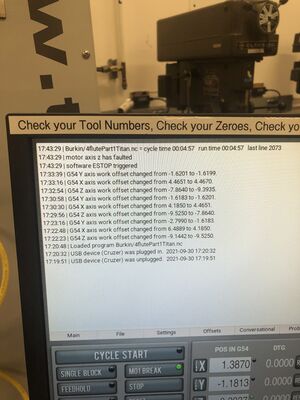
The Rubtsov Group (Optics Lab)
This lab came to me because they needed a new part for their to hold a prism accurately. They had tried to make this part on a manual mill but were not getting the tolerances they needed. I created the CAM and milled their part. I was able to hit the tolerances needed.
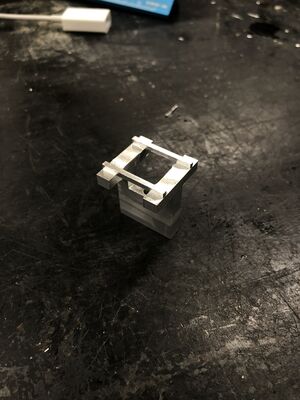
In the lab
This is a picture of the piece I made for the labs spectrometer. In the picture you can see the NeHe beam on the surface of the mirrors and on the prism that is being held by the piece I milled. The prism is not clean for alignment purposes.
CNC Lathe And CNC Mill
The Ferris Lab (Ecology Lab)
I worked closely with one of the lab members in The Ferris Lab, Bolivar Aponte, on this project. Bolivar needed to make something to hold the spectrometry probe in a way that when taking measurements of flowers, the probe and holder would not crush the pedals. The original set up of probe and holder was a slab of aluminum sitting on top of the flower with a small hole to hold the probe. We came up with a way that would reduce the amount of surface area on top of the flowers by angling the larger holder by 45 degrees and then making a cylindrical holder for the probe so that there is only a small surface area sitting on the flower. We needed to make this cylindrical holder so that there is no light penetrating to the measurement area. the probe itself is a cylinder with a small hole at the end where light comes out to take measurements. This set up we created will not only preserve the flowers better, but also make it easier to select the sample area.
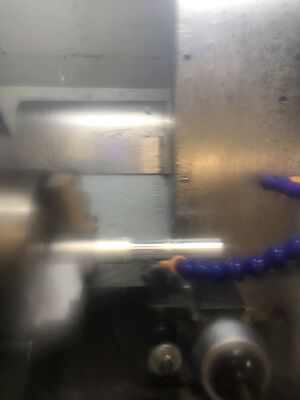
Making of the probe holder.

Machining all the surfaces flat relative to each other.
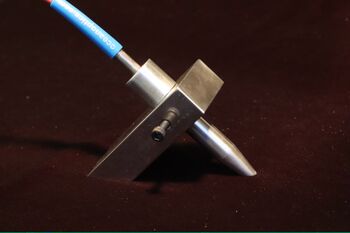
Final product. We are still in revision and continuing this project to fine tune the process.
Water Jet
I worked on a project to cut this 1 inch thick, cold rolled slab of steel, into a new base to hold a vice. The entire operation took around 45 minutes. The garnet container needed to be refilled over 10 times and I was constantly checking the orientation of the the water jet cutter. In setting up the program, I had to take into account the kerf of the water as the holes and size of the base needed to run true to the design. I ran a very slow cut for this operation to ensure the the deflection of the water, as it first goes through the steel, does not curve too much through the cut.
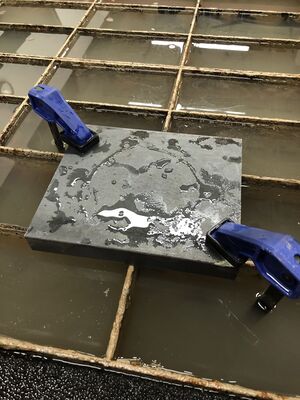
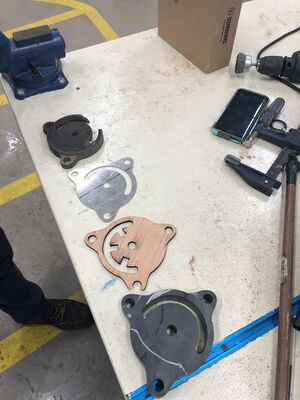
Quick Solution during a job
Casting
I modeled and 3D printed a shape with large draft angles to go through the process of forming the mold and pouring the pewter. I then 3D printed a tiki head to do another casting with the rest of the pewter I had.
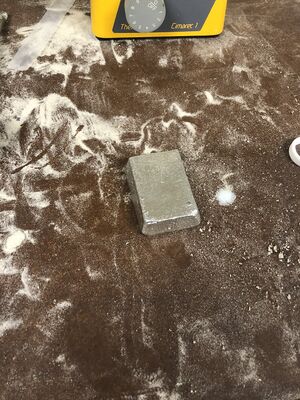
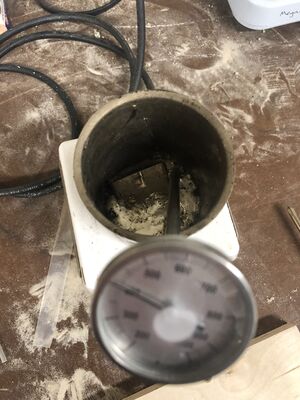
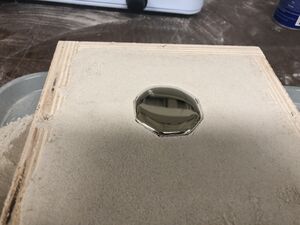
Laser Cutting
Truss Project
I made a Pratt Truss. I designed each component for the truss and then assembled the truss, connecting everything with screws, washers, and nuts.
